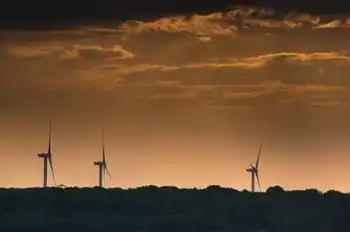Price rises amid plentiful power
By Toronto Star
Arc Flash Training CSA Z462 - Electrical Safety Essentials
Our customized live online or in‑person group training can be delivered to your staff at your location.

- Live Online
- 6 hours Instructor-led
- Group Training Available
In fact, at times in the coming months the power system will produce more power than the province can use.
That means it should be safe to carry on with plans to shut down the province's coal-fired generating stations, the IESO says in its latest 18-month forecast.
Shutting down the remaining coal plants, as the province has promised, will take 2,000 megawatts out of the system by 2014. Ontario needs about 20,000 megawatts of power at peak periods on a day with moderate temperatures. On a very hot or cold day, the peak demand can rise to 25,000 megawatts.
Offsetting the coal shutdown, two refurbished units at the Bruce A nuclear station are due to be back in service by the end of 2011, adding 1,500 megawatts of supply.
In addition, 600 megawatts of natural gas-fired generation are expected over the next 18 months, and another 1,200 megawatts from renewable sources, primarily wind.
Meanwhile demand for power, which slumped during the recession, is rebounding slowly. Conservation programs will dampen the demand for power by a meager 100 megawatts over the 18-month period.
Energy Minister Brad Duguid hailed the report.
"We can safely say that we're providing a stable and sustainable supply of energy moving forward," he said in an interview.
The report notes that the system may at times produce more power than it can handle.
That means power has to be exported, or plants that normally run 24 hours a day – such as a nuclear unit or a major hydro station – must shut down.
While the forecast paints a rosy picture of the energy supply, consumers are facing sharp electricity price increases in the months ahead – partly because of the HST, partly because the province is offering much higher prices to new generation projects.
But Duguid said that's no reason to back away from the province's aggressive plans to keep adding new supply and new transmission lines.
"We're going to require sources of supply beyond those 18 months," he said.
"There's no question that the costs of energy supply are on the rise, not only in Ontario but around the world. We need to make sure we're making the investments necessary to make sure Ontarians have the power they need, the transmission reliability they need and at the same time producing energy in a much cleaner way."
Wind developments, in particular, have been running into increasing opposition from residents who say the turbines are noisy and despoil the countryside.
But Duguid said wind is part of a "very healthy mix" of renewable, nuclear and gas-fired generation.
Part of the overall plan is to create 50,000 jobs, in part by attracting manufacturers of generating equipment, including wind turbines, he said.
The province still plans to build two new nuclear reactors at the Darlington nuclear station, he said, but uncertainty over the future of Atomic Energy of Canada Ltd. is clouding the picture.











